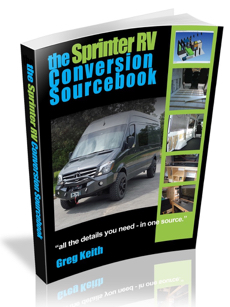About
About the Sprinter RV Web Site
June 1998: after eighteen months traveling southeast Asia and then Canada, Mexico and the US West coast, more than half of those in my trusty (rusty!) 1977 Dodge Tradesman 200 camper van, I decide that Boulder, Colorado is really a great place to climb, and to put down some roots. But “Camper Van Beethoven” only gets 6-8 miles per gallon, so it’s soon not moving too often.
Fast-forward to 2008: I’d really, really like to get on the road again. Maybe a VW Eurovan camper this time? Hadn’t really looked at one seriously, but now that I do, I notice:
- It’s under-powered, scratched up, not made anymore (how will we find parts, and how much will they cost?), but selling for more than the original MSRP
- It’s got a canvas top, so winter camping is probably out, unless the furnace is running continuously
- Sleeping 2 adults and 2 kids? Maybe, but what about rainy days? Need some inside space.
- I’m 5’10”, and I can only kneel inside – I want to stand up, like in the Dodge camper hardtop
- How many breakdown stories have I heard from my friends about their VWs by now?
What else is there? Nothing in our price range, I’m convinced. More searching, and I see a picture of a Dodge Sprinter cargo van. Hmmm…over six feet high inside in the high-roof version. And come to think of it, I have seen them before – FedEx, a million plumbers and electricians drive them, so we should be able to get one used. A Sprinter camper van?
But I don’t want another gas-guzzling 8000-lb. behemoth, I want this Sprinter RV to be light, and fuel-efficient, and it needs to sleep 4. I find out you can expect 18-22 mpg on the Sprinter turbodiesel engine, and even use biodiesel fuel, if you’re so inclined. How green can we get? Well, using LED interior lighting, a highly-efficient sealed-compressor 12V DC fridge with extra insulation, and a hand-operated pump for the sink, we can drop electrical usage low enough to be handled by two solar panels, specially designed for the high roof temperatures typical of solar panels flush-mounted on an RV roof. And it gets better: by using a diesel-powered ceramic cooktop/heater, we can eliminate the furnace and propane system entirely, meaning no heavy propane tank, no open flames and gas leakage risks.
But with two toddlers, we have no time to convert one, can we get somebody to build our design? A little more luck, and bingo, we found a good local Sprinter conversion company. They were willing and able to do an affordable custom Sprinter conversion – our own Sprinter RV.
Now we’re working on our second conversion, and the process is starting again, this time doing much of the work ourselves, and subcontracting out the rest. It’s a process, but in the end, I think we’ll wind up with a great result. We’ll see how it turns out this time!
Contact
If you’d like to contact me about my books or your Sprinter motorhome questions, you can reach me at info (at) sprinter-rv (dot) com.



